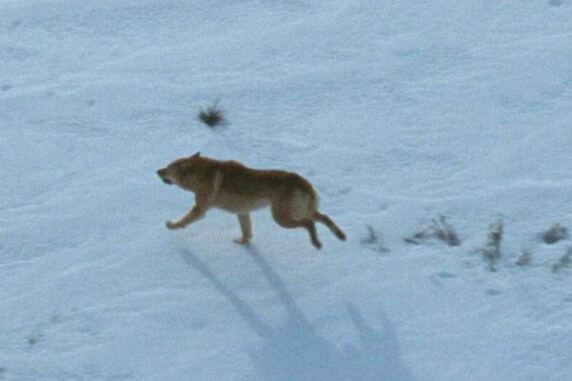About wild dogsAbout wild dogs
A wild dog is any dog (Canis familiaris) living in the wild, including dingoes, other feral dogs and their hybrids. Wild dogs pose a significant biosecurity risk through:
- predation and harassment of livestock and some native fauna
- the spread of disease.
As a result, they have been identified as a priority pest animal under all 11 regional strategic pest animal management plans developed by Local Land Services. It is therefore necessary to manage wild dogs under the general biosecurity duty of the Biosecurity Act 2015.
The general biosecurity duty requires any person dealing with a biosecurity matter (such as wild dogs), who knows or ought to know of the biosecurity risks posed by that biosecurity matter, to take measures to prevent, minimise or eliminate the risk as far as is reasonably practicable.
This means that the occupier of lands (both private and public) is required to take all practical measures to minimise the risk of any negative impacts of wild dogs on their land or on neighbouring lands.
Wild dogs may have both positive and negative impacts on the environment. Predation by wild dogs may reduce the impacts of overgrazing in arid and semi-arid ecosystems by regulating the abundance of native and exotic herbivores. Conversely, wild dogs may prey on some threatened species such as koalas and beach-nesting birds like pied oystercatchers. Nevertheless, the impacts of wild dog predation on populations of native species are unclear.
Dingoes in New South WalesDingoes in New South Wales
The dingo is an ancient breed of domestic dog introduced into Australia from Asia by humans around 4,000 years ago. Dingoes became established across the mainland and on many offshore islands, probably assisted by Aboriginal people. Their spread has been linked to the extinction of the thylacine (Tasmanian tiger) and the Tasmanian devil on the mainland.
Recent research has shown that more wild dogs than previously thought are dingoes or carry dingo genes. The NSW Scientific Committee has identified hybridisation with other wild dogs as a threat to dingoes in New South Wales as part of the key threatening process: predation and hybridisation by feral dogs (Canis lupus familiaris).
Managing wild dogs in our national parksManaging wild dogs in our national parks
The NSW Wild Dog Management Strategy 2022–2027 promotes a balance between managing wild dogs in areas where they have negative impacts and conserving dingoes elsewhere. The conservation of dingoes is listed as one of the goals of the strategy, to be achieved through a series of wild dog management plans covering different parts of the state. These plans focus control and management in areas where the risk of negative impacts is greatest.
The National Parks and Wildlife Service (NPWS) contributes to the development of wild dog management plans in partnership with Local Land Services and wild dog management committees around New South Wales. These plans are developed in accordance with the Guidelines for the preparation and implementation of wild dog management plans (PDF 339KB).
Wild dog management is undertaken in national parks across New South Wales, aligned with relevant regional strategic pest animal management plans, wild dog management plans, NPWS wild dog policy, NPWS strategies and supporting operational planning frameworks.
Most wild dog management programs in national parks and reserves aim to minimise their impacts on livestock on adjoining lands. Management programs are also undertaken to minimise the risks that wild dogs pose to people and some threatened species. NPWS works closely with other public and private land managers, as well as Local Land Services, to implement cooperative control.
Control methods
Under the Biosecurity Act 2015, pest animal management is recognised as a shared responsibility for all community members. Private and public landowners and managers are required to control wild dogs to minimise the risk of any negative impacts on their land or that of their neighbours.
Control methods for wild dogs in national parks and elsewhere include ground baiting, aerial baiting, trapping, shooting and fencing. These methods are described in the National Code of Practice for the humane control of wild dogs.
Management is most effective when a combination of methods is used and when land managers work together across the landscape.
Reporting pest animalsReporting pest animals
Sightings and other information about widespread pest animals should be reported to Local Land Services.
Sightings of unusual animals should be reported to the NSW Department of Primary Industries and Regional Development at Report an unusual animal sighting or by phoning 1800 680 244.
